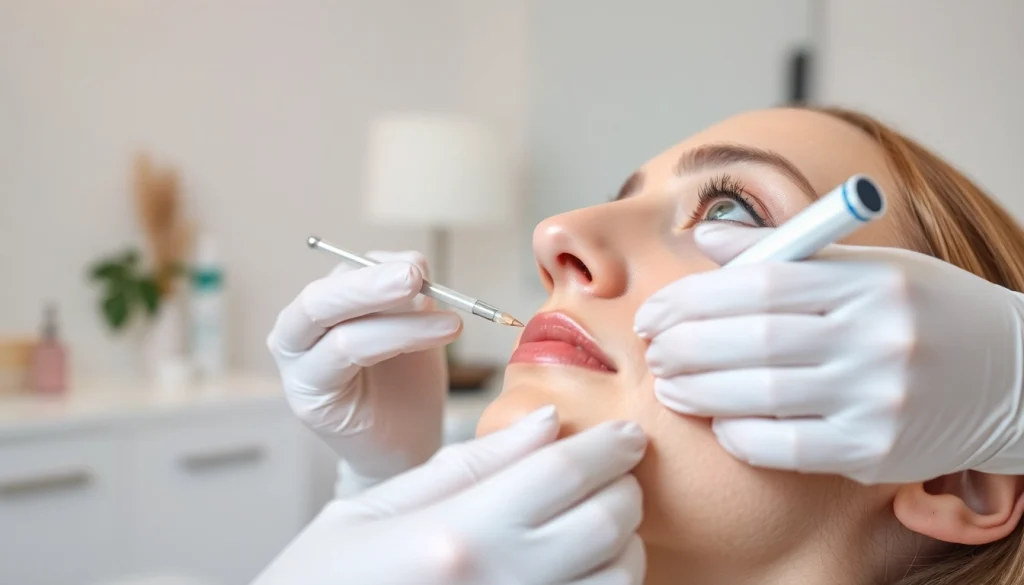Choosing the Best Filler for Wrinkles: A Comprehensive Guide

Understanding Wrinkles and Aging
Wrinkles are a natural part of the aging process, signaling changes in the skin that many people seek to address through various cosmetic procedures. A multitude of factors contribute to the development of these lines and creases, ranging from environmental influences to genetic conditions. Understanding the nature of these wrinkles is essential for making informed decisions about treatments like dermal fillers, especially when considering the best filler for wrinkles.
Types of Wrinkles
Wrinkles can broadly be classified into two categories: static and dynamic. Static wrinkles are those that remain visible regardless of facial movements and primarily appear with age as the skin loses elasticity. These typically manifest around the lips, eyes, and neck. Dynamic wrinkles, on the other hand, occur due to repetitive facial expressions, such as frowning or smiling, leading to lines that become more pronounced over time, including forehead lines and crow’s feet.
Factors Contributing to Aging
The aging of the skin is influenced by a combination of intrinsic and extrinsic factors. Intrinsic aging, which is genetically determined, leads to a gradual reduction in collagen and elastin production, resulting in thinner, less resilient skin. Extrinsic factors such as sun exposure, pollution, smoking, and poor nutrition expedite this process, causing oxidative stress and inflammation that contribute to wrinkle formation. Understanding these factors can help individuals take preventive measures to maintain skin health and appearance.
Benefits of Dermal Fillers
Dermal fillers offer a solution for those seeking to reduce the visibility of wrinkles effectively. These minimally invasive treatments provide immediate results by filling in lines and restoring volume, creating a smoother skin surface. The benefits include minimal downtime, less discomfort compared to surgical options, and results that can last several months to years depending on the type of filler used. Additionally, fillers can stimulate the body’s natural collagen production, further enhancing skin elasticity and youthfulness over time.
Best Fillers for Wrinkles
Choosing the right filler is imperative for achieving the desired aesthetic outcome. Various types of fillers are available, each designed to address specific concerns associated with aging and wrinkles.
Types of Fillers Available
There are several categories of dermal fillers, including:
- Hyaluronic Acid Fillers: These are the most common types and are favored for their ability to hold moisture, making the skin appear plump and hydrated. Examples include Juvederm and Restylane.
- Calcium Hydroxylapatite Fillers: This type is commonly used for deeper wrinkles and has a thicker consistency. Radiesse is a well-known brand that falls into this category, promoting collagen production.
- Poly-L-lactic Acid Fillers: This filler is not immediate but helps stimulate collagen production over time, providing gradual improvements. Sculptra is a popular option in this category.
Comparing Hyaluronic Acid Fillers
Hyaluronic acid fillers are often the first choice for treating wrinkles due to their natural compatibility with the body and immediate effects. However, they can vary significantly in terms of longevity, viscosity, and ideal treatment areas. Products like Juvederm Ultra and Juvederm Voluma are tailored for different applications, with Ultra being suitable for fine lines and Voluma more appropriate for volumizing areas like the cheeks. Understanding these differences can assist in selecting the right filler for targeted issues.
Impact of Product Quality on Results
The quality of filler products plays a crucial role in the outcome of treatments. Higher-quality, FDA-approved fillers tend to offer better safety profiles and more consistent results. Patients should always ensure that their practitioner uses reputable products that have a history of efficacy and safety, as this can significantly affect both the immediate and long-term results of the procedure.
Consultation and Treatment Process
Before undergoing filler treatments, it is essential to have a thorough consultation with a qualified practitioner. This stage sets the foundation for a successful outcome.
Preparing for Your Consultation
During the consultation, patients should be prepared to discuss their medical history, any allergies, and previous cosmetic procedures. It is also advisable to bring photos of desired outcomes to help the practitioner understand specific aesthetic goals. Patients may also be advised to avoid certain medications or supplements that can increase bruising prior to treatment.
What to Expect During Treatment
The treatment process typically takes less than an hour. After cleansing the area, a topical anesthetic may be applied to minimize discomfort. The filler is then injected using a fine needle, with the practitioner carefully placing it to achieve the most natural look. Patients might experience minor swelling or redness post-treatment, which is normal and usually subsides within a few hours to days.
Post-Treatment Care
After receiving fillers, patients should follow specific post-care instructions to enhance results and minimize complications. This includes avoiding strenuous exercise, excessive sun exposure, and applying makeup for at least 24 hours. Regular moisturization and avoiding alcohol can also aid healing and enhance the longevity of the results.
Risks and Considerations
While dermal fillers are generally safe, understanding potential risks is important for informed decision-making.
Common Side Effects of Fillers
Side effects of dermal fillers can include swelling, bruising, pain at the injection site, and allergic reactions. These effects are typically mild and temporary. However, patients should be aware of signs of more serious complications such as infection or prolonged swelling, which should be immediately reported to their practitioner.
Who Should Avoid Fillers?
Certain individuals may not be ideal candidates for filler treatments. Those who are pregnant, breastfeeding, or have a history of severe allergic reactions or skin disorders should avoid filler procedures. Additionally, people with current active skin infections or inflammation in the treatment area should delay treatment until these conditions resolve.
Long-Term Effects of Filler Use
While many patients enjoy the immediate benefits of fillers, it’s important to note that these are temporary solutions. Long-term repeated use of fillers is generally safe; however, some patients may develop resistance over time or experience changes in skin texture. Consultation with a knowledgeable practitioner can help navigate these concerns and assess the best approach for maintaining youthful skin over time.
Finding a Qualified Practitioner
Choosing the right practitioner is vital for both safety and satisfaction with treatment results. Qualified professionals can provide comprehensive evaluations and tailor treatments to individual needs.
What Credentials to Look For
Patients should seek practitioners who are certified and specialize in cosmetic procedures. Look for credentials such as board certification in dermatology, plastic surgery, or a related field. Respected practitioners often have extensive training in anatomy, aesthetic techniques, and experience with various types of fillers.
Questions to Ask Before Treatment
Before proceeding with treatment, patients should ask potential practitioners about their experience with fillers, the types of products they use, and their approach to achieving natural-looking results. Also, inquire about expected downtime, aftercare, and how complications are managed. This helps establish trust and ensures that patients feel comfortable with their chosen provider.
Building Trust with Your Provider
The patient-practitioner relationship is crucial for a positive experience. Open communication about expectations, preferences, and any concerns can foster a collaborative environment where patients feel empowered in their decisions. Success in achieving the best filler for wrinkles also depends on this strong rapport with the provider.







